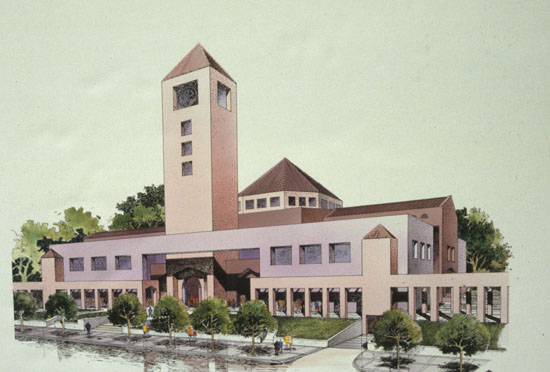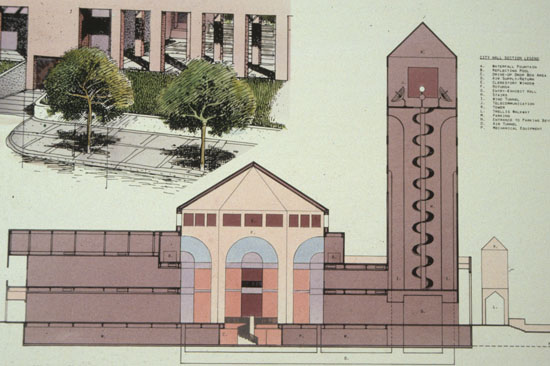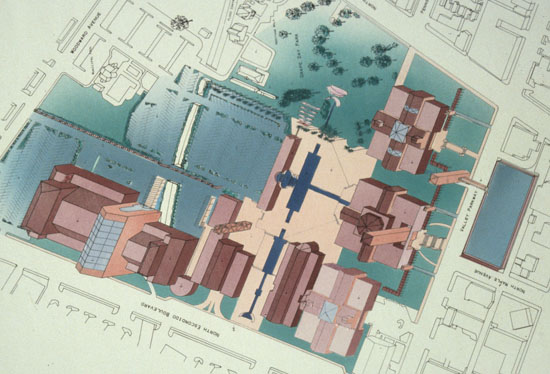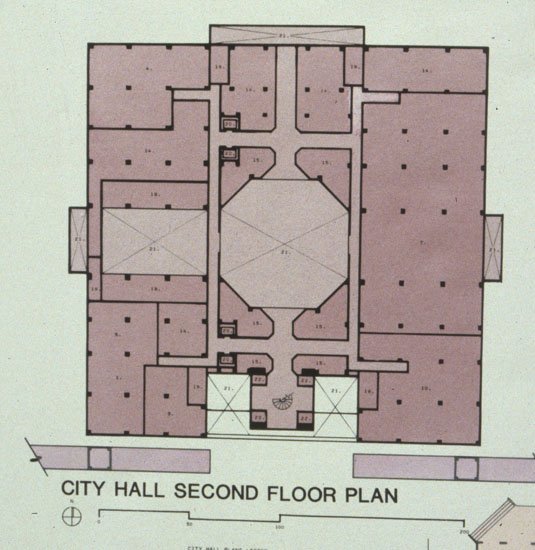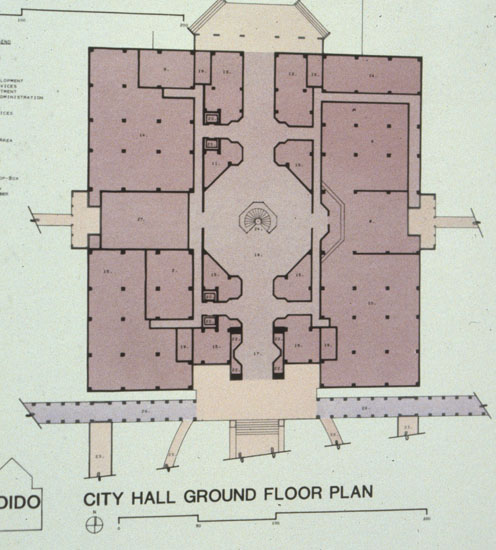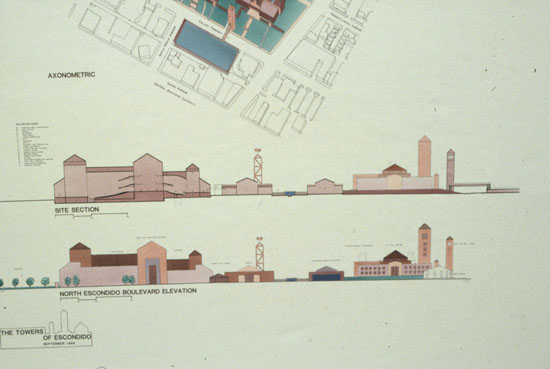Escondido Competition
- Subject:
- Competition
- Project Number:
- 0817
- Date:
- August 1984
- Client:
- Escondido City Hall
- Location:
- Escondido, California
- Project Name:
- Escondido Competition
“…in architecture, the pride of man, his triumph over gravitation, his will to power, assumes a visible form.”
– Friedrich Nietzsche, The Twilight of the Idols
The proposed Escondido city hall was designed in the image of a proud and growing city, to provide the center of gravity it seeks, and to house its essential identity. Willis sited city hall prominently within a formal, beaux-arts plan, orienting the building not toward the corner, but along the north maple axis which bisects the site and links it to the central business district. At the top of this building she have placed a tower – that age-old symbol of temporal power and civic pride – as the focus of the axis and the city. At the center of the building is a large rotunda symbolizing the community, that marketplace of ideas and interactions that constitutes a democracy.
Flanking city hall are the buildings of regional government. These Willis chose to break down into two, in keeping with the scale of the city and its civic buildings, rather than leave it as an outsized monolith. These and other buildings surround a formal courtyard that provides a transition to the recreational and cultural elements of the site, and a place for the festive and the prosaic, with city hall as its backdrop. A cascading fountain, flowing into a reflected- ivy pool demarcating the site’s primary axis, separates the courtyard visually from the on-grade parking beyond.
They are state-of-the-art buildings, convenient in planning, and designed for cost-effective construction and operation. The city hall and the office buildings are designed using the two stories over on- grade parking, a concept that private sector development has shown to be particularly economical. Each story has approximately 40-42,000 square feet of floor area, a size that is both cost-effective to build and very efficient to use. They are conceived as “high tech” buildings as well – even the tower is a functional element, supporting the broadest range of telecommunications, and serving as a wind tower that allows the use of natural ventilation.
The auditorium with stage, back stage, stage wings, stage door and stage support areas are raised above ground level and production and production support, pits, etc. on lower level. Loading docks would be located to serve both levels. Theater with modified thrust stage; fly tower and all production and support areas. All of the buildings are of steel frame and metal stud walls. The walls are covered with integrally colored stucco and the sloped roofs are designed with glazed tile.
Yet, the design of these buildings is deliberately traditional in feeling, derived from that style of California architecture which reached its apogee in H.H. Richardson’s work at Stanford university – a style of building design intended, not simply for the “here and now,” but for generations to enjoy and admire. The colors of these buildings also reflect Escondido’s Hispanic traditions, but they allude as well to the contemporary work of the Mexican designer Luis Barrigan, and to his notion of architecture of intersecting planes, to which the bold use of color lends strength and clarity of purpose.
